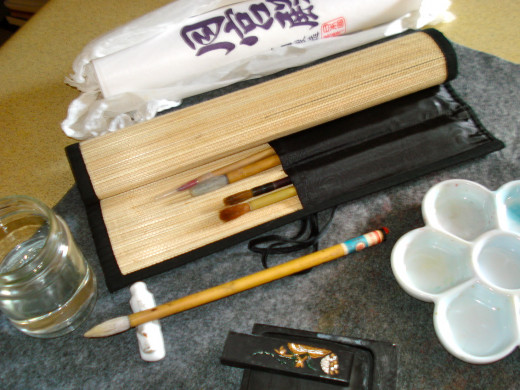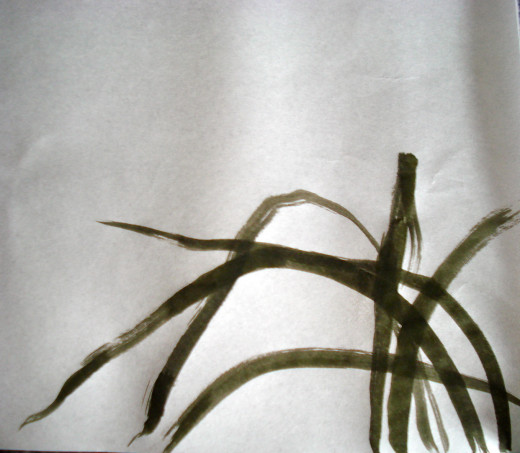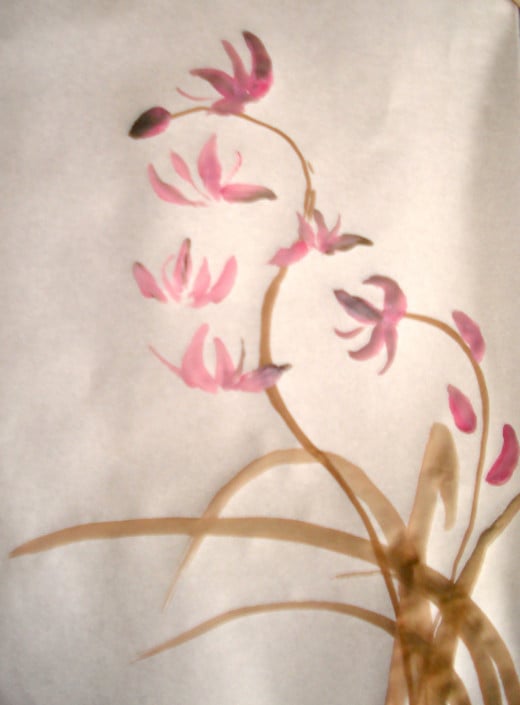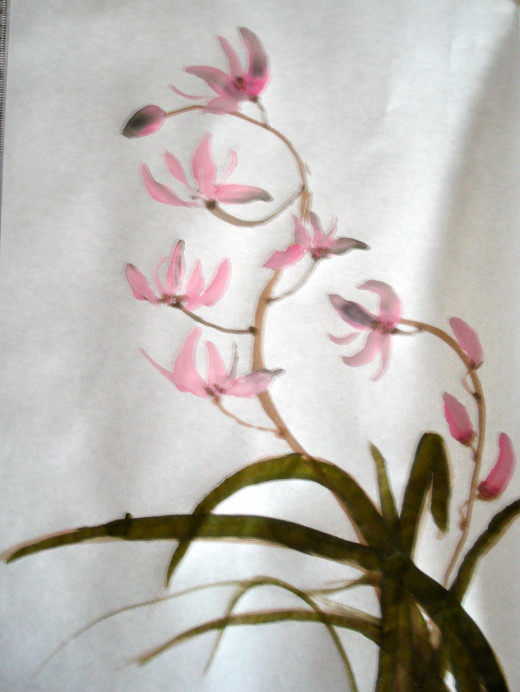Chinese Watercolour for Painting Orchids
The Orchid: Spring Gentleman
The Chinese have a flower for each of the four seasons. I have already written about bamboo, which is for summer. These flowers are known as gentlemen and the one for Spring is the orchid. For Westerners orchids are usually considered elegant and exotic, a symbol for luxury.
The Orchid and Chinese Symbolism
Chinese people love orchids and would agree with Western thought about them, although different areas of China seem to attach different meanings to these beautiful flowers. They can be a symbol of elegance, refinement, perfection, high virtues and innocence. They are also seen as an emblem of abundance and may be kept in a house to encourage fertility. They are also given to people when they are ill or in hospital and are considered useful in curing coughs and lung disease.
The Orchid and Industry
The orchid belongs to the family Orchidaceae, the largest flowering plant family in the world. There are over 25,000 different species that grow naturally and more are still being discovered.
- Retail Trade: Although we think of them as being tropical, orchids will grow naturally in many climates and are sold by nurseries and garden centres around the world.
- Food and Cosmetics Industries: Around 110 species of orchids are used in industry. They are the flat-leafed and mostly sweet-scented Vanilla orchids. The word 'vanilla' means 'little pod,' and it is the pod that is used for flavouring and perfumery. After flowering, over about nine months the pod gradually turns black as it matures and both the expensive pod and the seeds are used.

Prepare the Materials
Before you begin, set out the materials that you may need, so that everything is ready.
- The painting can be done on watercolour paper, but it's more fun and quite inexpensive to use Chinese rice-paper that can be purchased in a roll. Using a ruler, gently tear off a sheet or two of the size that you want for your painting. An extra sheet is useful for practice.
- A small box of Chinese watercolour tubes.
- Two or three different sized Chinese brushes.
- A small palette.
- An absorbent rug to rest the paper on when painting.
- A container of clean water.
- An old cloth is useful, too.

How to Paint the Orchid
1. Begin with the leaves.
- Wet your brush in the water. In your palette, mix together black and yellow (Cadmium is one you could choose) watercolour paints to obtain a dark green. Get rid of extra moisture on the brush. Anchor the paper. Remember that you do not touch the paper with your hands; the brush is held almost horizontally above the paper.
- Keeping the brush fairly dry, decide where you want the leaves and 'air-paint' each stroke a couple of times to be sure of the position, then apply the stroke on the paper. Use the flat side of the brush to begin at the bottom and turn it to obtain a point for the end of the leaf. The drier brush strokes help to suggest older, tattered leaves.
- Remember that the rice-paper is fairly fragile and if you paint over the strokes more than once you may end up with a hole.

2. Next, the flower stems, petals and buds.
- The Stems. Mix a brownish colour, such as Burnt Sienna, with a little white. Again, holding the brush vertically, practise where you want the stems to be, then draw them down the paper.
- The Petals. Add a red, such as Rouge (Lake) and a white to the palette. Mix some of the white to the red to achieve a delicate pink for the orchid petals. Charge the brush with the white or a pale pink near the base, a slightly darker pink further along and a tiny amount of black at the tip. To make each petal, pull the brush from the petal tip towards the centre of the flower, pressing a little more in the centre to make it a little wider there and curving the petal as you go. It's a good idea to practise on the spare paper first. Remember that these orchids are delicate, so do not make them look too heavy.
- The Buds. For the buds, use a flat side of the brush and charge it in a similar way, making the colour a little darker than for the petals. Make the base of the bud a little wider than the flower petals, too.

3. Completing the Painting.
- The Smaller Stems. Making the brownish paint on your palette a little darker, draw the small stems from the main stem to each flower. Attach at each end with a darker dot.
- The Anthers. Using the darker brownish colour, add the anthers in the centre of the flowers.
Now your painting is complete and ready for mounting.
Please Answer this Poll
Have you done Chinese watercolour painting before?
© 2013 Bronwen Scott-Branagan








